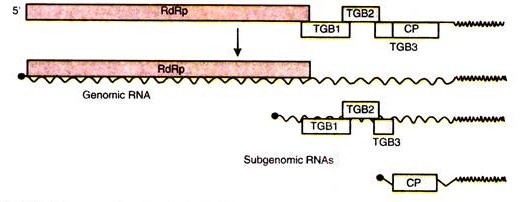ADVERTISEMENTS:
It is clear that a substrate can be enzymatically converted into a great variety of intermediates and products.
Although there are a number of essentially unidirectional reactions, the metabolic network of reversible and cyclical reaction sequences provides for the possible conversion of almost any metabolite into any other metabolite.
In a superficial comparison, one could visualize the metabolic pathways as a branching and connecting network of water pipes in which the water can be caused to flow between any two points in the network under suitable conditions.
ADVERTISEMENTS:
For example, simply an excess of water (metabolite) in one part of the system could cause flow to the other parts of the system.
In vivo and in vitro experiments have indicated that the “flow” of metabolites through metabolic pathways is not as free and uncontrolled as this pipeline-network analogy suggests. Metabolic conversions are controlled or regulated by a variety of mechanisms that channel metabolites into needed compounds or into stable reserve products and prevent energetically wasteful conversions.
Cells have evolved a diverse set of regulatory mechanisms. Individual Reactions may be controlled by one or more processes from simple mass action to complex hormonally controlled enzyme systems.
Mass Action:
ADVERTISEMENTS:
A + B <===> C + D …(11-1)
For any reversible reaction, such as in which A and B are reactants and C and D are products, the ratio of the concentrations of products [C] and [D] and reactants [A] and [5] at equilibrium is
[C][D]/[A][B] = K’eq
At equilibrium concentrations, the reaction rate in one direction equals the reaction rate in the opposite direction, resulting in no net change in the concentration of reactants or products. The value of the equilibrium constant depends on temperature and pressure. The standard equilibrium constant, K’eq, is the equilibrium constant at 25°C, 1 atmosphere pressure, and pH 7.0. If the concentration of any one of the components of the reaction is altered, then the concentration of at least one other component must also change to satisfy the constancy of the K’eq value.
For reaction 11-1, if the K’eq value is greater than 1.0, then the equilibrium of the reaction lies to the right as written; that is, when the rate of reaction forming products C and D is equal to the rate of reaction converting C and D to A and B, there is more total product than total reactant. Similarly, if the K’eq value is less than 1.0, the equilibrium lies to the left as written, and there is more total reactant than product when the reactions are at equilibrium.
In a sequence of reactions, each reaction may affect the other reactions. For the reaction sequence of Figure 11-1, the equilibrium of the intermediate reaction, in which glucose-6-phosphate is converted to fructose-6-phosphate, lies to the left, because it has a K’eq value that is less than 1.0.
However, for the other two reactions, the equilibrium lies well to the right because their K’eq values are much higher than 1.0. If the entire sequence of reactions is allowed to come to equilibrium, then the concentrations of all of the molecules present will satisfy each of the three K’eq values. If additional glucose and ATP are added, the entire sequence of reactions will proceed to the right even though the K’eq value of middle reactions is less than 1.0.
This occurs because the production of glucose-6- phosphate by the first reaction temporarily disturbs the equilibrium that existed. The middle reaction thus proceeds to the right to a greater extent than it proceeds to the left, resulting in a net increase in fructose-6-phosphate.
ADVERTISEMENTS:
Some of this fructoses-phosphate is then converted to fructose-1,6-diphosphate by the third reaction. The rate at which the net change in concentrations of reactants and products occurs and the direction in which the reaction proceeds is the result of mass action.
Which of two alternative metabolic paths is taken a branch point (Fig. 11-2) is controlled to some degree by the law of mass action. Although the equilibrium lies to the right for each of the reactions of Figure 11- 2, the equilibrium is “further” to the right in the reaction that produces fructose-1,6-diphosphate, and more product would be formed by reactions along that branch than along the branch that forms gluconolac- tone-6-phosphate.
However, during glucose metabolism as it takes place in situ, both fructose-1,6- diphosphate and gluconolactone-6-phosphate are intermediates in a more extensive sequence of reactions than is shown in Figure 11-2, and the K’eq values of subsequent reactions may affect the direction of the reactions differently in situ.


